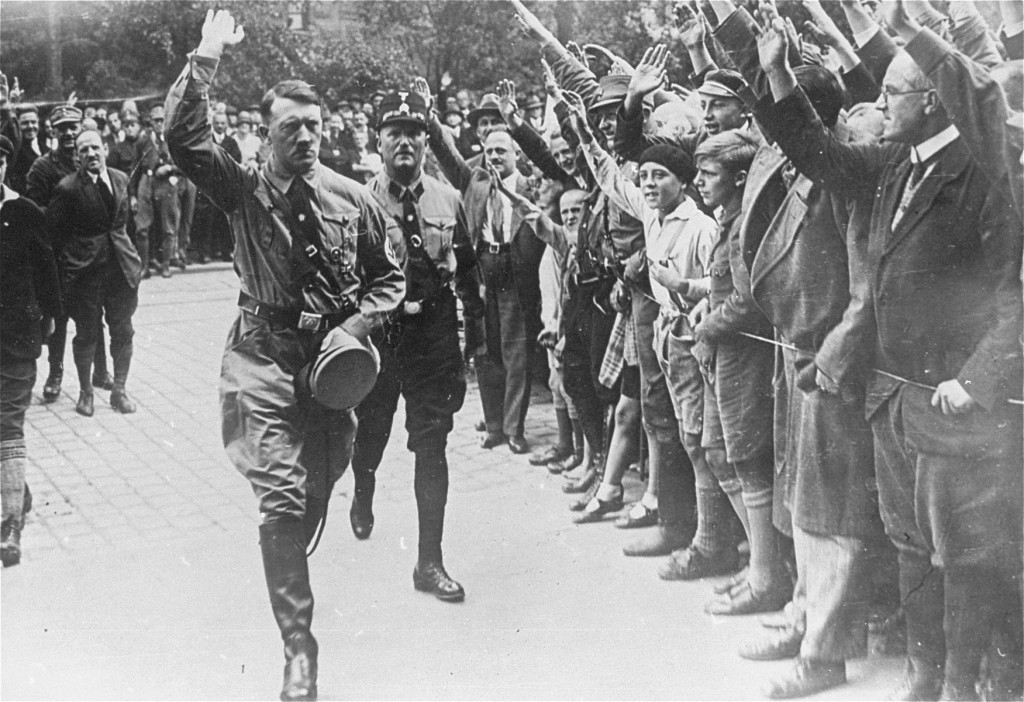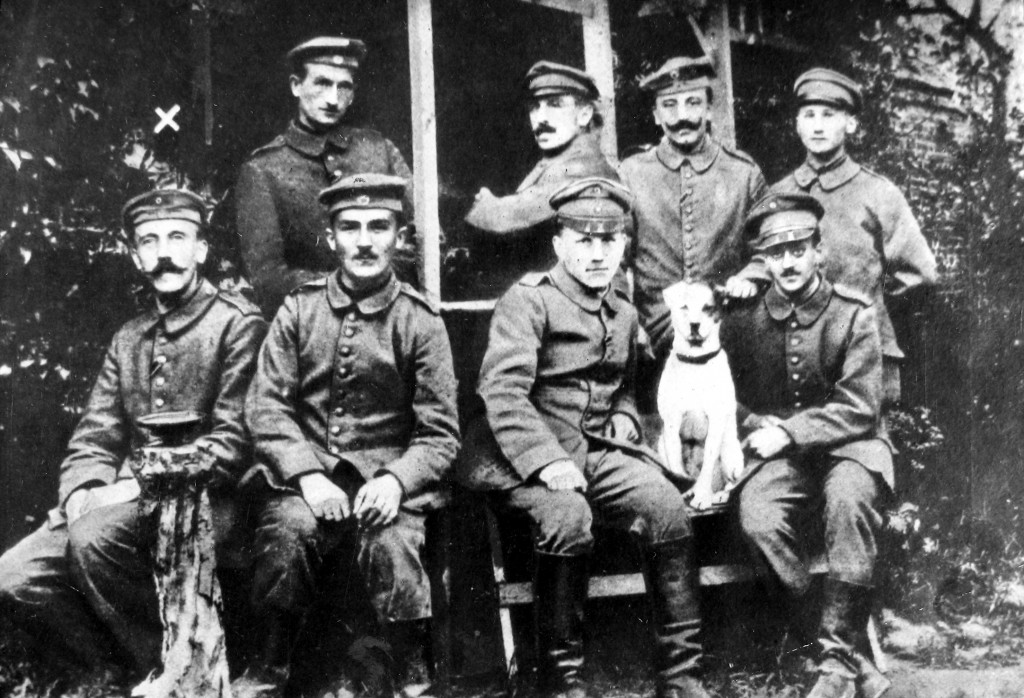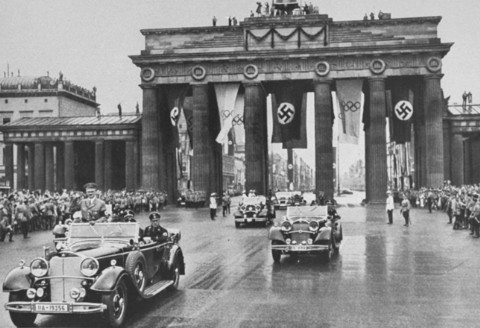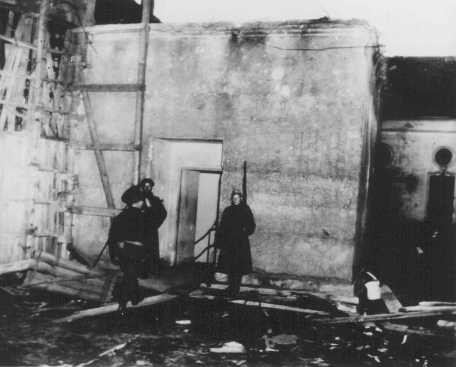
Adolf Hitler: Key Dates
Under Adolf Hitler's leadership and imbued with his racially motivated ideology, the Nazi regime was responsible for the mass murder of 6 million Jews and millions of other victims.
Key Facts
-
1
Though Hitler’s ideology and leadership bear primary responsibility for the Holocaust and deaths of millions in World War II in Europe, the Nazi regime had substantial support from many quarters and benefitted from much indifference among civilians and professionals.
-
2
There are many myths and misunderstandings about Hitler and his life. The most common is his alleged Jewish ancestry.
-
3
The events listed below are some of the important milestones in the life of one of Europe's most ruthless dictators.
April 20, 1889
Adolf Hitler (1889–1945) is born in the Upper Austrian border town of Braunau am Inn, the son of tax collector Alois Hitler. Contrary to popular belief, he had no Jewish ancestors.
1908
Hitler moves to Vienna. His impoverishment and residence in homeless shelters began the following year after he had squandered a generous inheritance. Hitler lives in Vienna until May 1913.
1913
Hitler moves to Munich, Germany, in May, and in the following year he enlists in the German army to fight in World War I.

1918
Hitler is partially blinded in a mustard gas attack near Ypres in Belgium. News of the November 11, 1918, armistice reaches him as he is convalescing in a military hospital. World War I has a profound impact on Hitler and many other Germans. The impact of the conflict and its divisive peace has repercussions for decades to come, giving rise to a second world war and genocide committed under its cover.
September 12, 1919
Hitler attends an early meeting of the German Workers' Party (Deutsche Arbeiterpartei-DAP), which will later become the Nazi Party under his leadership.
November 8–9, 1923
Adolf Hitler and the Nazi Party lead a coalition group in an attempt to overthrow the government of Bavaria and initiate a “national revolution.” This so-called Beer Hall Putsch fails. Hitler and others are arrested for treason.
1923–25
Hitler is convicted of high treason and sentenced to five years imprisonment, although he serves only one year. While in prison, he writes Mein Kampf (My Struggle). This infamous memoir proves significant in promoting key components of Nazism and its racial ideology. Published in two volumes in 1925 and 1926, it would sell one million copies in 1933, Hitler's first year in office.
1925
Hitler establishes the SS (Schutzstaffel; Protection Squadrons). During the Nazi regime, the SS will become responsible not only for the German police force and the concentration camp system, but also for security, identification of ethnicity, settlement and population policy, and intelligence.
April 10, 1932
Hitler loses a run-off election for the German presidency to the elderly incumbent, General Paul von Hindenburg.
January 1933
The Nazi Party comes to power with the appointment of Adolf Hitler as Chancellor.
March 23, 1933
Following the burning of the German parliament building, the Reichstag, by unknown arsonists, the German parliament passes the Law for Rectification of the Distress of Nation and Reich, commonly known as the Enabling Act (Ermächtigungsgesetz). This law allows Hitler, as Chancellor, to initiate and sign legislation into law without obtaining parliamentary consent. The act effectively establishes a dictatorship, under Hitler, in Germany.
June 30-July 2, 1934
On Hitler’s order, Nazi leaders eliminate the leadership of the SA and kill other political enemies. The murderous purge cements an agreement between the Nazi regime and the German army that consolidates Nazi power and enables Hitler to proclaim himself Führer (leader) of Germany and to claim absolute power.

Summer 1936
Hitler opens the Berlin Olympics. 1936 represents a rare instance in which one nation, Germany, hosted both the winter and summer Olympic Games. Nazi Germany uses the 1936 Olympics for propaganda purposes. The Nazis promote an image of a new, strong, and united Germany while masking the regime’s targeting of Jews and Roma (Gypsies) as well as Germany’s growing militarism.
1938
Hitler meets with the leaders of Britain, France, and Italy at a conference in Munich, Germany, on September 29–30, 1938, in which they agree to the German annexation of the Sudetenland in exchange for a pledge of peace from Germany. Six months later, Hitler moves against the Czechoslovak state.
March 12, 1938
German troops march into Austria. Native son Adolf Hitler crosses the Austro-German border at midday at his hometown, Braunau on the Inn. On the following day, the annexation of Austria to the German Reich is announced. On March 15, Hitler enters the Austrian capital Vienna before a cheering crowd of 200,000.
January 23, 1939
In a speech to the German parliament in January 1939, Hitler states that another world war will result in the elimination of Jews from Europe.
August 23, 1939
German and Soviet foreign ministers Ribbentrop and Molotov, respectively, sign a German-Soviet Pact. The main tenet of this agreement is a ten-year non-aggression pact in which each signatory promises not to attack the other.
September 1, 1939
Nazi Germany invades Poland, initiating World War II.
Fall 1939 or early January 1940
Adolf Hitler signs a secret authorization for a “euthanasia’” program, the systematic killing of patients with mental and physical disabilities who are living in institutional settings in Germany and German-annexed territories. It is the only instance in which Hitler signs an authorization for a program of systematic mass murder.
1941
In 1941, Adolf Hitler, Heinrich Himmler, Reinhard Heydrich and other leading German authorities reach the decision to physically annihilate the Jews of Europe.
June 22, 1941
The German army invades the Soviet Union in "Operation Barbarossa." As opposed to their conquests in western Europe, Hitler and other Nazi leaders see war against the Soviet Union in racial and ideological terms.
December 11, 1941
In the aftermath of the Japanese attack on Pearl Harbor, Nazi Germany and its ally Italy declare war on the United States, despite the fact that the US had declared war only against the Empire of Japan. In less than a year, American ground troops will fight German forces in North Africa.
June 9, 1942
Hitler orders retaliatory measures against the Czech population following the death of Reinhard Heydrich, second-in-command of the SS. The towns of Lidice and Lezaky are destroyed and the inhabitants massacred or deported.
January 31–February 2, 1943
After months of fierce fighting and heavy casualties, German forces (numbering now only about 91,000 surviving soldiers) surrender at Stalingrad in a major turning point of World War II and a disaster for Hitler’s long-held goal of defeating the Soviet Union.
June 6, 1944
Allied troops successfully land on the Normandy beaches of France, opening a “Second Front” against the Germans and Hitler's regime.
July 20, 1944
Hitler survives an assassination attempt coordinated by military and civilian officials. The failure of the attempt and the intended coup which was to follow led to the arrest of some 7,000 and the execution of nearly 5,000 individuals.

April 30, 1945
Hitler commits suicide in an underground bunker in Berlin rather than face capture by advancing Soviet forces.
1945
The International Military Tribunal (IMT) at Nuremberg decides not to try Adolf Hitler, Heinrich Himmler, and Joseph Goebbels in absentia. All three had committed suicide before the end of the war. In doing so, the IMT wished to avoid creating the impression that they might still be alive.
Critical Thinking Questions
What societal factors and attitudes contributed to the rise of Hitler?
What pressures and laws led to the persecution of political opponents by the Nazi government?
Besides military participants, what other professionals were charged with crimes in the wake of the Holocaust?
How can knowledge of the events in Germany and Europe before the Nazis came to power help citizens today respond to threats of genocide and mass atrocity?

